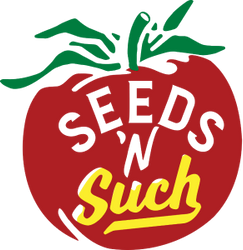
Apples—from Potent Medicine to Mild-Mannered Clones
The Symbol of Health and Longevity
“People have been touting the health benefits of apples for at least 5000 years,” says author Jo Robinson in her book, Eating on the Wild Side. “Our well-known rhyme ‘An apple a day keeps the doctor away’ is a remake of a 19th century Welsh saying: ‘Et an apple before gwain to bed maketh the doctor beg his bread,’” she continues, “Apples have symbolized health and longevity throughout recorded history.”
But Robinson quickly emphasizes that most modern-day apple varieties have lost their medicinal properties when she says, “Wild apples—apples the way nature made them—may indeed help us live longer and healthier lives. In a 2003 survey, USDA fruit researchers measured the phytonutrient content of 321 wild and domesticated apple trees. The lab tests showed that the wild apples were vastly more nutritious than our cultivated varieties. One wild species had 15 times more phytonutrients than the Golden Delicious variety. Another species had 65 times more.
Tiny Nutritious Show Stealer
“The show-stealer was the Sikkim apple (Malus sikkimensis), native to Nepal,” she says, “Ounce for ounce, the fruit had 100 times more phytonutrients than our favorite apples. People living in remote villages in Nepal still gather these fruits today. One day’s harvest gives them as much apple nutrition as most of us get in a lifetime.”
However, there is little likelihood of finding these extraordinarily nutritious apples in the marketplace, due to their bitter taste and their extremely small size at that of half a raisin, with a weight of only half a gram. “You would have to eat 500 of them to get the same amount of fruit as in one medium-size Honeycrisp,” says Robinson, “To match the Honeycrisp’s phytonutrient content, however, you would need to eat only five of them—an amount that would nestle into a teaspoon. What the wild apples lack in size, they make up in potency.”
Robinson cites this dramatic loss in bionutrients as the major reason today’s apples are, for the most part, much less effective at fighting cancer and other diseases. “In a 1994 study, Japanese researchers compared Fuji apples, one of our most popular varieties, with apples from two other species,” she notes, “On average, the apples from the other species had five times more antioxidant activity than the Fuji, including four times more vitamin E. More compelling, they were much more effective at fighting leukemia cells. One species had 80 times more cancer-fighting compounds than the Fuji. The researchers concluded that the Fuji had ‘almost no anti-cancer activity.’ Our supermarkets have large, luscious, and sweet apples, but some of the varieties may offer relatively little protection against cancer and other diseases.”
Lack of Diversification
In fact, nearly all of the world’s cultivated apples come from one species (Malus sieversii) native to central Asia, which features the larger fruit size and sweeter taste, but is severely lacking in nutrition when compared with all but a handful of species worldwide. In colonial America, this same explosion of selecting new sweeter and more productive varieties began, and, Robinson says, “ By 1910, more than 15,000 apples were growing in U.S. orchards. That number began to dwindle in the next few decades, as large orchards began to supply more of the nation’s apples.
“Today the number of varieties growing in the United States has been winnowed down to 500—three per cent of the original 15,000,” Robinson says, “At first glance, 500 varieties may seem like ample diversity, but there’s a catch—fewer than 50 of these varieties are being produced in any quantity. It gets worse. Nine out of every 10 apples we eat come from a mere dozen varieties. We’ve gone from 15,000 varieties to 12 in just three generations.
“You see the same assortment of apples in store after store:,” she continues, “Red Delicious, Golden Delicious, Fuji, Gala, Braeburn, Granny Smith, Jonagold, Idared, Gravenstein, McIntosh, Cortland, and the newly popular Honeycrisp. These varieties—the 12 most common in America—are making inroads around the world as well, squeezing out more nutritious heirloom apples. The low-nutrient Golden Delicious is not only the most popular apple in the United States, it is now the top-selling apple in the world.”
But most recently, USDA researchers here in the U.S., as well as researchers from around the world are taking a renewed interest in restoring the diversity in our apple production, but this time around, the researchers are not just searching for hardier, more pest-resistant types, but also those with the highest levels of nutrition. Several new discoveries of extraordinarily nutritious-fruiting heirloom trees, but especially the newly-named “Full Monty” in New Zealand, has given added hope that we may, in fact, be able to restore the claim that “An apple a day keeps the doctor
These health-building varieties are planned for release worldwide in the near future.
Finally, Robinson offers us these tips as apple consumers:
(1) Choose the most nutritious varieties in the supermarket from her list provided.
(2) Choose the most colorful fruit on display.
(3) Eat the skin. Eating the whole apple doubles health benefits.
(4) Lower your exposure to pesticides. Rinse apples thoroughly or buy organic.
(5) For the widest selection, shop at local orchards or farmers’ markets in season.
(6) Store apples in a cool, humid environment, but eating fresh is most healthy.
(7) Choose unfiltered cider or cloudy (up to 4 times more phytonutrients) apple juice.
(8) Grow or graft your own apple trees.
